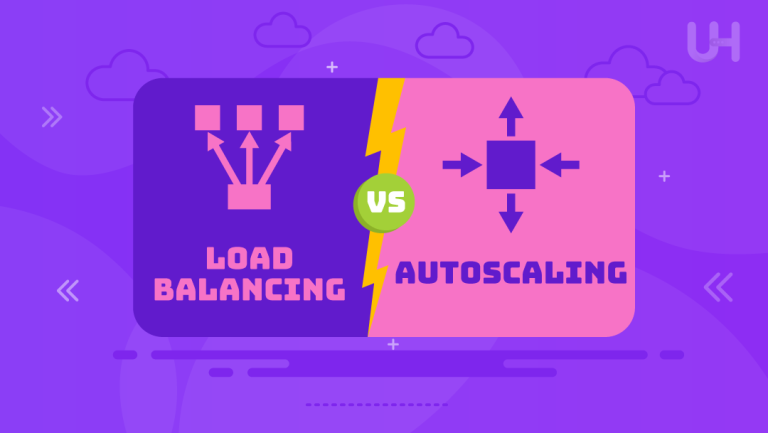Failover refers to the process of switching a system to its redundant backup during points of failure to ensure business continuity and minimize downtime. It is quite important in disaster recovery data protection through both automatic and manual methods of failover, normally basing its operation on failover clustering and load balancing to keep the business-critical systems up and running.
In this blog, we will explain failover, its importance, types, and best practices to minimize downtime and protect critical systems for seamless operational efficiency. Understanding various failover strategies means you can ensure system reliability does not fail; hence, all data cannot be lost, and you can continue with your business without unexpected failures.
What Is Failover?
Failover refers to a system’s ability to maintain high availability and business continuity by automatically switching to backup systems during disruptions or failures, ensuring uninterrupted service. This process involves system redundancy and can be either automatic or manual, allowing for a smooth transition to maintain critical systems without delays.
Failover clustering and load balancing minimize downtime and provide robust disaster recovery capabilities, all while ensuring risk mitigation for long-term operational stability. Effective performance monitoring ensures that the failover process optimizes operational efficiency and maintains system reliability during unexpected failures or planned maintenance.
Importance of Failover
Failover is critical in ensuring business continuity and high availability by automatically switching to backup systems and minimizing downtime and bounce rates during unexpected failures. By maintaining system redundancy, failover provides essential protection for critical systems, enhancing disaster recovery efforts and optimizing performance through continuous monitoring and efficient resource allocation.
Both automatic failover and manual failover mechanisms contribute to risk mitigation, supporting operational efficiency by preventing system outages and safeguarding against potential revenue loss. Failover solutions, including load balancing and failover clustering, strengthen customer trust by ensuring consistent service availability and maintaining long-term business stability.
Types of Failover
- Active-passive: Failover involves a standby system ready to take over automatically when the primary system fails.
- Active-active: Failover ensures all systems work simultaneously, offering redundancy and load balancing during failures.
- Manual failover: Requires human intervention to switch to backup systems, while automatic failover triggers without intervention.
- Categories: Failovers can be classified into categories like network, server, database, and hardware, each ensuring critical components remain operational during disruptions.
Active-Passive Configuration
An active-passive configuration involves a primary system handling operations while the backup system remains in standby mode, ensuring system redundancy and business continuity. Depending on the situation, the failover mechanism triggers either an automatic or a manual transition, minimizing downtime.
This setup is particularly useful for disaster recovery and critical systems, as it supports high availability through effective resource allocation and performance monitoring to ensure system stability. This configuration guarantees high availability by enabling seamless transitions through load balancing while safeguarding operational stability and recovery during unforeseen circumstances or system failures.
Active-Active Configuration
An active-active configuration involves multiple active systems operating simultaneously, with load balancing distributing workloads evenly to ensure system redundancy and high availability across all components. By eliminating a standby mode, this setup guarantees automatic failover and manual failover capabilities, which provide efficient disaster recovery and optimize resource allocation to minimize downtime.
This configuration supports critical systems through continuous performance optimization, ensuring seamless transitions between failover servers and promoting consistent fault tolerance for maintaining business continuity. Active-active setups excel in environments requiring maximum high availability and operational resilience by dynamically managing resources to handle unexpected failures.
Safeguard Your Business with DDoS Protected VPS!
Protect your critical systems with UltaHost’s DDoS-protected VPS, offering robust failover mechanisms. With advanced protection and redundancy, you can ensure seamless business continuity, minimize downtime, and guard against cyber threats.
Manual vs Automatic Failover
Automatic
Automatic failover involves continuously monitored systems that automatically transition upon trigger events. It provides real-time failover for critical systems without manual intervention, minimizes downtime, and reduces the risk of human error. However, it can be more resource-intensive and complex to configure.
Manual
In contrast, manual failover requires human intervention, which can increase time sensitivity and the risk of delay during disaster recovery. However, it offers more flexibility in certain scenarios and is often less expensive, though less efficient in maintaining business continuity.
Failover Clustering

Failover clustering ensures high availability and system redundancy by using multiple servers or cluster nodes, which automatically take over operations when one node fails, preventing disruptions to critical systems. This approach relies on load balancing to distribute workloads with large click-through rates effectively while ensuring that failures trigger automatic failover processes. Manual failover is used as a backup to further ensure that downtime is kept to a minimum.
The system continues running smoothly even during failures by enabling seamless transitions between active and passive nodes, making it essential for business continuity and disaster recovery. Resource sharing within the cluster enhances efficiency, while continuous performance monitoring and effective cluster management help identify potential issues before they lead to critical failures.
The system’s design ensures proper risk mitigation strategies are in place. This makes server clustering a reliable solution for maintaining operational stability in environments where uptime is crucial. This strategic approach supports long-term resilience by providing business continuity. It enables businesses to recover quickly from unexpected failures and maintain operational integrity.
Load Balancing Integration
Load balancing efficiently distributes traffic across multiple shared servers, ensuring high availability and minimizing downtime. It optimizes resource utilization for critical systems in real-time monitoring. This method improves overall performance by monitoring server health and utilizing both automatic and manual failover mechanisms for enhanced system stability. It also ensures seamless scalability.
Load balancing supports redundancy and business continuity through session persistence. It also helps maintain response time improvements for critical systems under heavy workloads. It actively balances traffic while maintaining continuous performance monitoring, ensuring high availability and system reliability. This approach optimizes resource use for maximum operational efficiency, especially during traffic surges.
Monitoring and Alerts
Monitoring and alerts provide real-time system health tracking, utilizing automated alerts for error detection. This enables quick response time tracking and downtime prevention efforts. Critical systems are continuously observed through threshold alerts and anomaly detection, ensuring resource utilization and traffic monitoring remain efficient for consistent operations.
Customizing alerts improves the efficiency of failure escalation processes. System logs offer insight into performance bottlenecks for ongoing disaster recovery optimization. Continuous performance monitoring helps detect issues early, supporting high system availability through real-time health tracking. This ensures prompt error detection and response management for critical systems.
Testing Failover Plans
Regularly testing failover plans by simulating failures ensures that critical systems remain operational. This process helps identify weaknesses and improves disaster recovery procedures for effective risk mitigation. Simulated failures assess system performance in managing both automatic and manual failover. This ensures efficient load handling and minimizes downtime.
Monitoring network failover and cloud storage server failover responses helps protect data privacy. This approach ensures that all systems are prepared for real-world disruptions. Comprehensive failover testing addresses recovery time objectives to evaluate systems’ response to disruptions. This process ensures smooth operations through risk mitigation strategies aimed at minimizing downtime and optimizing disaster recovery.
Conclusion
Failover systems are critical for ensuring business continuity. They provide high availability through automatic and manual failover processes that protect critical systems from unexpected disruptions. Minimizing downtime through load balancing, system redundancy, and failover clustering ensures optimized system performance. These measures also facilitate efficient disaster recovery procedures, which are essential for maintaining operational stability.
Regularly testing failover plans and implementing effective monitoring and alerts help identify potential risks. This approach also improves overall risk mitigation strategies for seamless operations. Failover systems guarantee operational efficiency by safeguarding data integrity and promoting uninterrupted business operations. They achieve this through reliable, scalable, and efficient system performance and protection strategies.
Enhance your website’s uptime and performance with UltaHost’s Cloudflare Hosting. It provides advanced failover solutions and DDoS protection for seamless business continuity, ensuring high availability and minimizing downtime.
FAQ
What is failover?
Failover refers to a system’s capability to automatically switch operation to a backup in the event of a failure. This ensures service continuity and high availability.
Why is failover important?
Failover ensures business continuity and uptime, allowing the critical systems to remain safe during disruptions for their continuous operations.
What kinds of failovers are there?
There are multiple kinds of failover. They can occur automatically or may require manual intervention. Additionally, they can be configured with either active-passive or active-active settings to ensure redundancy and availability.
How does it work failover clustering?
Failover clustering links multiple servers together for resource sharing. This setup ensures redundancy within the system for automatic failover in case of failures.
What is load balancing in failover?
Load balancing distributes traffic across servers to optimize resource usage and improve system redundancy, ensuring high availability.
What is the difference between active-active and active-passive?
While Active-Active uses all the servers simultaneously, Active-Passive keeps one server on standby for failover.
How is failover tested?
Failover includes testing to simulate failures, monitoring system responses, and ensuring that disaster recovery plans work in cases of disruption.













